Electric bikes typically reach speeds between 15.5 mph and 28 mph depending on their class and motor power, with some high-performance models capable of much higher speeds. Models like TST EBike’s 26-inch and 27-inch offer top speeds around 28 mph, balancing power and safety for diverse riding needs. Understanding speed limits, motor capabilities, and influencing factors helps riders choose the right e-bike and ride responsibly. How far can the Defender go on a single charge?
What Are the Legal Speed Limits for Different Classes of E-Bikes?
In the U.S., e-bikes are categorized into three classes with specific speed limits. Class 1 and Class 2 e-bikes are limited to 20 mph, with Class 1 offering pedal-assist only and Class 2 including throttle control. Class 3 e-bikes can reach up to 28 mph using pedal-assist but typically lack throttle functionality. These classifications help regulate e-bike usage on various paths and roads, ensuring safety and compliance with local laws.
E-bikes are classified by their motor assistance and speed limits:
- Class 1: Pedal-assist only, motor assists up to 20 mph; no throttle.
- Class 2: Throttle-assisted, motor assists up to 20 mph.
- Class 3: Pedal-assist only, motor assists up to 28 mph; no throttle, often with helmet and age restrictions.
These classifications determine where and how fast you can legally ride. Most TST EBike models fit into Class 1 or 3 categories, offering speeds up to 28 mph.
How Does Motor Power Influence E-Bike Speed?
Motor wattage directly affects potential speed. Common commuter e-bikes have motors between 250W and 750W, suitable for speeds up to 20 mph. Higher wattage motors, like TST EBike’s 1000W mid-drive motors on their 26-inch and 27-inch models, enable speeds up to 28 mph and better hill-climbing ability. Ultra-high-power motors (1000W+) can reach speeds exceeding 40 mph but may not comply with legal classifications.
Which Factors Affect Actual Riding Speed Beyond Motor Power?
Several elements influence an e-bike's real-world speed beyond just motor power. Rider weight and cargo load can impact acceleration and top speed. Terrain plays a role; uphill climbs reduce speed, while downhill descents can increase it. Tire pressure and tread affect rolling resistance, influencing efficiency. Wind resistance and weather conditions also play significant roles. Additionally, battery charge level and pedal-assist settings determine how much assistance the motor provides, affecting overall speed.
Several factors influence real-world speed:
- Terrain: Flat, smooth roads allow higher speeds; hills and rough trails reduce speed.
- Rider weight and cargo: Heavier loads decrease acceleration and top speed.
- Battery charge: Lower battery levels may limit motor power output.
- Weather: Wind resistance and wet or icy surfaces can slow riders.
- Tire type and pressure: Narrow, high-pressure tires improve speed; fat tires prioritize stability over speed.
What Are the Speed Capabilities of TST EBike’s 26-Inch and 27-Inch Models?
TST EBike's 26-inch and 27-inch models offer varying speed capabilities. The 26-inch fat tire models, equipped with 1300W motors, can reach speeds up to 28 mph, suitable for rough terrains. The 27.5-inch models, designed for urban commuting, feature 1000W motors and also achieve speeds up to 28 mph. These specifications make TST EBikes versatile for both city rides and off-road adventures.
- 26-inch TST EBike Model: Equipped with a 1300W motor delivering up to 28 mph, featuring fat tires for rough terrain and stable handling.
- 27-inch TST EBike Model: Powered by a 1000W motor with speeds up to 28 mph, optimized for commuting and mountain biking with mountain tires.
Both models balance speed, power, and control, suitable for riders seeking efficient and versatile e-bikes.
TST EBike Speed and Power Comparison Chart
| Feature | 26-inch Model | 27-inch Model |
|---|---|---|
| Motor Power | 1300W | 1000W |
| Top Speed | 28 mph | 28 mph |
| Tire Type | Fat tires | Mountain tires |
| Terrain Suitability | Rough, snow, sand | Urban, mixed terrain |
| Battery Capacity | 48V 15-20Ah | 48V 15-20Ah |
How Do Safety and Local Regulations Impact E-Bike Speed Usage?
While e-bikes can reach high speeds, riders must adhere to local laws restricting assisted speeds to 20 mph or 28 mph depending on class. Helmets and age limits often apply to faster Class 3 e-bikes. Riding responsibly within these limits ensures safety for riders and others. TST EBike models comply with these regulations, offering features like hydraulic brakes and lighting for secure high-speed riding.
What Are the Benefits and Risks of High-Speed E-Bikes?
Higher speeds reduce commute times and improve ride enjoyment but increase accident risk and require advanced handling skills. High-speed e-bikes demand better brakes, suspension, and rider awareness. Choosing models like TST EBike’s that balance power with safety features helps mitigate risks.
How Does The Yamaha TTR 110 Perform For Beginners?
The Yamaha TTR 110 performs well for beginners thanks to its automatic clutch, smooth power delivery, and manageable size. It’s lightweight and easy to handle, making it ideal for young or new riders learning off-road basics. Its reliable four-stroke engine ensures consistent performance with low maintenance.
The Yamaha TTR 110 is an excellent choice for beginners, especially young riders or those new to off-road riding. Its automatic clutch eliminates the need for manual clutch control, allowing riders to focus on learning balance and throttle control without worrying about complex gear shifting. The bike’s smooth power delivery and manageable size make it incredibly easy to handle, providing confidence and control on a variety of terrains. Weighing in as a lightweight model, the TTR 110 is perfect for smaller riders who need a bike that won’t overwhelm them but still offers enough power to enjoy off-road adventures.
Powered by a reliable four-stroke engine, the Yamaha TTR 110 delivers consistent and predictable performance, which is key for building riding skills safely. Its low-maintenance design means less time spent on upkeep and more time riding, making it a practical and durable option for beginners. Additionally, features like a comfortable seat height and responsive suspension help absorb bumps, ensuring a smoother ride. Overall, the TTR 110 combines ease of use, reliability, and durability, making it a standout beginner dirt bike that grows with the rider’s skills.
Why Is The Yamaha TTR 110 Popular Among Youth Riders?
The Yamaha TTR 110 is popular among youth riders due to its user-friendly design, low seat height, and durable build. It offers smooth handling, a semi-automatic transmission, and dependable performance, making it a perfect transition bike for kids moving up from smaller dirt bikes.
The Yamaha TTR 110 is highly popular among youth riders because of its user-friendly design that caters specifically to beginners and growing riders. Its low seat height allows young riders to plant their feet firmly on the ground, boosting confidence and safety while learning. The bike’s durable build ensures it can withstand the rough and tumble of off-road adventures, making it a reliable companion for kids. With a semi-automatic transmission, it simplifies gear shifting, allowing young riders to focus on mastering throttle control and balance without the complexity of a manual clutch.
Beyond its practical features, the TTR 110 offers smooth handling and dependable performance, making it an ideal transition bike for kids moving up from smaller dirt bikes. Its responsive suspension and manageable power help riders develop essential riding skills while enjoying a fun and engaging experience. The bike’s reputation for reliability and ease of use makes it a favorite among parents and youth alike, providing a safe and exciting way for young riders to grow their confidence and abilities on two wheels.
What Makes The Scooter Taotao 50cc Ideal For City Riding?
The Taotao 50cc scooter is ideal for city riding because of its compact size, fuel efficiency, and easy maneuverability in traffic. It offers low operating costs, simple controls, and a smooth ride, making it perfect for short commutes, errands, and urban transportation.
Buying Tips
When selecting an e-bike for speed and performance:
- Choose motor power based on needs: TST EBike’s 1300W 26-inch for power and rough terrain; 1000W 27-inch for versatile commuting.
- Consider legal classifications: Ensure compliance with local speed limits.
- Prioritize safety features: Hydraulic disc brakes, lights, and durable tires.
- Test ride models: Experience speed, handling, and comfort.
- Check battery capacity: To maintain power over longer rides.
What is the maximum speed an e-bike can go?
The maximum speed an e-bike can technically go depends on its motor. Some custom or high-powered e-bikes with motors of 3,000W to 10,000W can reach 60–85 mph or more. However, these are not legal for public road use and are classified as electric motorcycles or off-road vehicles. Standard e-bikes are usually capped at much lower speeds for safety and compliance.
How fast can you legally ride an ebike?
You can legally ride an e-bike up to 28 mph (45 km/h) in the US on Class 3 models—this is with pedal assist. In the UK and EU, e-bikes are limited to 15.5 mph (25 km/h) with motor assistance. Exceeding these speeds means the bike is treated as a moped or motorcycle and must meet additional legal requirements.
Why do e-bikes only go 28 mph?
E-bikes are capped at 28 mph for safety and regulation. This limit allows Class 3 e-bikes to share infrastructure with bicycles and helps reduce crash severity. It also defines their classification, keeping e-bikes distinct from mopeds or motorcycles, which face more stringent registration and insurance laws.
Can an e-bike go 70 mph?
Yes, some custom or extreme e-bikes with high-powered motors can reach 70 mph, but these are not street-legal as e-bikes. Models with motors above 5,000W can achieve such speeds, but are considered electric motorbikes and require registration, special licensing, and full safety equipment.
How Fast Do Electric Bikes Go Without Pedaling?
E-bikes with a throttle (Class 2 in the US) can typically go up to 20 mph without pedaling, as that is the legal limit for throttle use. Some unrestricted or modified models can go faster, but exceeding 20 mph on throttle alone usually reclassifies the bike as a moped.
How Fast Can Electric Bikes Go In The UK?
In the UK, legal e-bikes are limited to 15.5 mph (25 km/h) with motor assistance. Above this speed, the motor must cut out and only human pedaling can propel the bike faster. E-bikes with higher top speeds are not treated as bicycles and are heavily regulated.
How Fast Can Electric Bikes Go Legally?
Legally, electric bikes go up to:
- 20 mph for Class 1 and 2 e-bikes in the US
- 28 mph for Class 3 e-bikes in the US (pedal assist only)
-
15.5 mph (25 km/h) for all e-bikes in the UK and EU
Going beyond these limits classifies the vehicle differently and requires licensing and registration.
What Is The Average Speed Of An E-Bike In Km/H?
The average speed of a legal e-bike is 25–32 km/h (15.5–20 mph), with Class 3 e-bikes averaging up to 45 km/h (28 mph) when using pedal assist in the US. Actual average speed varies by rider, terrain, and bike class.
How Fast Is An Electric Bike With 50MPH Top Speed?
An electric bike with a 50 mph top speed is considered a high-powered e-bike or electric motorcycle. These bikes use motors of 3,000W or more, offer extreme performance, and are used off-road or on private property due to legal restrictions. Safety equipment and advanced controls are essential at such speeds.
How Fast Do E-Bikes Go On Average?
On average, e-bikes travel at 20–25 km/h (12–16 mph) during typical use, with legal motor assistance. Class 3 e-bikes may cruise closer to 28 mph (45 km/h) if the rider consistently uses the highest assist on suitable roads.
How To Remove The Speed Limiter On An E-Bike?
Removing the speed limiter involves modifying the controller or sensors that restrict motor output, but this is not recommended. It may void your warranty, breach local laws, and make your bike illegal for road use. Tampering limits also raises safety and reliability issues.
How Fast Do Electric Scooters Typically Go?
Electric scooters typically achieve speeds of 25–32 km/h (15–20 mph) for legal street use. High-performance models can reach 40–50 km/h (25–31 mph), but these may be restricted or banned from public roads in many areas for safety reasons.
Have you ever wondered why your favorite e-bike seems to accelerate faster than a standard bicycle? Or maybe you’re curious about the legal boundaries that govern ebike speed in your area? In today’s detailed guide, we’re diving deep into the science, regulations, and real-world experiences behind electric bike speeds. Whether you’re a speed enthusiast or a casual rider, this post answers the burning questions you might have—starting with “What truly determines e-bike speed?” and “How can I safely, and legally, increase my bike’s performance?”
Most standard e-bikes reach 20-28 mph (32-45 km/h) due to legal restrictions. High-performance models can hit 35+ mph (56+ km/h), while modified e-bikes may exceed 50 mph (80 km/h). Actual speed depends on motor power, battery capacity, terrain, rider weight, and local regulations governing e-bike classifications.
We scoured popular platforms like Quora and Reddit to pinpoint the top questions users are asking. Here are some key topics riders frequently discuss:
- Legal speed limits for e-bikes in different countries: What are the rules in the U.S., Europe, and Asia?
- Motor wattage vs. real-world performance: How does your bike’s motor specification translate to speed on the road?
- Safety risks of modifications: What should you consider before tinkering with your e-bike to get extra speed?
- Battery life trade-offs: Does riding at maximum speed compromise your battery’s longevity?
- Speed comparisons: How do e-bikes stack up against traditional bikes—and even cars—in urban traffic?
- Rider weight and efficiency: How does your physique affect the overall performance of your e-bike?
- Top models for speed enthusiasts: Which e-bike models are designed for those who crave a faster ride?
- Terrain and weather effects: How do factors like hills or strong winds impact your speed?
- Manufacturer speed claims: Are these figures realistic, or just marketing hype?
- Speed maintenance tips: How do seasoned riders keep their e-bikes running at peak speed over long distances?
This article addresses these topics head-on while providing actionable advice for riders looking to enhance their experience without compromising safety or legality.
1. Understanding the Dynamics of E-Bike Speed
E-bike speed is influenced by motor power, torque, rider input, and terrain. Higher wattage and torque enable faster acceleration and better hill climbing. However, factors like rider weight and road conditions also play significant roles in determining actual speed.
1.1 Key Components Influencing Speed
Motor Power and Wattage:
The motor is the heart of an e-bike. Most entry-level e-bikes come with motors ranging from 250W to 750W. Generally, a higher wattage translates to a higher potential speed. However, real-world performance also depends on factors such as motor efficiency and design.
Battery Capacity:
Battery performance is closely tied to the motor. A powerful motor paired with a battery that can’t sustain high output for long may lead to reduced speeds over time. Riders should consider both the voltage and amp-hour (Ah) rating to ensure a consistent power supply.
Controller Settings:
The electronic controller determines how much power is delivered to the motor. Manufacturers program controllers based on safety and regulatory guidelines. Altering these settings might boost speed but could also void warranties or break legal limits.
Rider Input:
When you pedal, your effort is amplified by the motor. The term “electric bike pedal” is sometimes used interchangeably with pedal-assist systems, which add extra power based on your pedaling input. The quality and type of pedals—sometimes marketed as “best ebike pedals”—can also affect efficiency.
Weight and Aerodynamics:
Every rider’s body weight adds to the load the motor has to move. Moreover, aerodynamics play a crucial role, especially at higher speeds. Streamlined designs and reduced wind resistance contribute significantly to overall speed performance.
1.2 Data-Driven Insights
Recent studies and user reports indicate that, under optimal conditions, many e-bikes can reach speeds of 20-28 mph (32-45 km/h). However, this range can vary dramatically based on the factors outlined above. Manufacturers often provide “GPS-verified speed” data, which can be more reliable than lab-tested numbers.
A simplified table summarizes these key factors:
| Component | Impact on Speed |
|---|---|
| Motor Wattage | Direct correlation: higher wattage, higher speed |
| Battery Capacity | Sustains speed; inadequate capacity leads to drop-off |
| Controller Settings | Dictates maximum output, can be a limiting factor |
| Rider Weight | Heavier loads decrease acceleration and top speed |
| Aerodynamics | Improved design reduces drag, enhancing speed |
2. Navigating Legal Speed Limits for E-Bikes
In the U.S., e-bikes are classified into three categories:
- Class 1: Pedal-assist only, up to 20 mph.
- Class 2: Throttle-assisted, up to 20 mph.
-
Class 3: Pedal-assist only, up to 28 mph.
Regulations vary by state, so it's essential to check local laws before riding.
2.1 Global Regulations and Variations
Legal speed limits for e-bikes differ around the world. It’s important for riders to know the limits in their country or region to avoid fines and ensure safety.
-
United States:
Many states classify e-bikes as “low-speed electric bicycles” if their motor does not exceed 750W and their maximum speed with motor assistance is 20 mph (32 km/h) on level ground. However, this can vary; some states allow speeds up to 28 mph in certain classes. -
European Union:
E-bikes are often limited to 25 km/h (15.5 mph) for pedal-assisted models. Higher speeds are generally reserved for vehicles with registration and insurance, like mopeds or motorcycles. -
Asia:
Countries like China have a range of standards. Some high-performance e-bikes can legally exceed speeds of 30 mph, but regional laws must be carefully observed.
2.2 Compliance and Safety Considerations
Understanding and abiding by local regulations isn’t just about avoiding legal issues—it’s also about ensuring your safety and that of others. Over-speeding or modifying your e-bike beyond legal limits can lead to:
- Increased risk of accidents
- Insurance complications in case of an accident
- Potential voiding of manufacturer warranties
2.3 How to Increase E-Bike Speed Legally
For riders looking to boost their e-bike performance, consider the following tips while staying within legal limits:
- Optimize your riding posture to reduce drag.
- Maintain your bike regularly to ensure all components function at peak efficiency.
- Upgrade to high-quality parts, such as advanced electric bike pedals, that are designed to maximize power transfer without compromising safety.
- Consult with professionals or local authorities before making modifications.
3. Motor Wattage vs. Real-World Performance
While higher motor wattage suggests more power, real-world performance depends on factors like battery capacity, controller efficiency, and terrain. A well-tuned 500W motor can outperform a poorly optimized 750W motor in certain conditions.
3.1 Theoretical vs. Practical Speed
While motor wattage is a clear indicator of an e-bike’s potential, real-world conditions can greatly affect actual speed. A 500W motor might theoretically push an e-bike to 30 mph under ideal conditions, but in urban settings with stop-and-go traffic, steep hills, and variable weather, riders might see a significant drop-off in speed.
3.2 The Role of Battery and Controller
The battery’s capacity and the controller’s settings often serve as bottlenecks. Even if the motor is capable of high output, a battery that cannot deliver consistent power or a controller that limits output for safety reasons will restrict the e-bike’s speed. This interaction between components is key to understanding the real-world performance of your e-bike.
3.3 Comparative Analysis: Electric Bike vs. Normal Bike
Consider the speed dynamics of a typical e-bike compared to a normal bicycle:
- E-bike: With motor assistance, speeds can be maintained even when tackling inclines or adverse conditions, but they are often limited by legal and design constraints.
- Normal Bike: Relies solely on human power; while experienced cyclists can achieve high speeds, sustaining such speeds over long distances is challenging.
A simplified comparison:
| Aspect | E-Bike | Normal Bike |
|---|---|---|
| Average Speed | 15-25 mph (with assistance) | 10-15 mph for casual riders |
| Climbing Ability | Enhanced due to motor boost | Limited by rider’s physical capacity |
| Long-Distance Riding | Consistent speed possible with battery support | Fatigue sets in quickly without assistance |
| Legal Constraints | Must adhere to local e-bike regulations | Fewer speed restrictions |
This table helps clarify that while e-bikes offer significant speed advantages, their performance is finely balanced by legal standards and component limitations.
4. Safety Risks and Modifications
Modifying e-bikes to exceed legal speed limits can compromise safety, leading to increased accident risks and potential legal issues. Unauthorized modifications may also void warranties and insurance coverage.
4.1 Modifying Your E-Bike: What You Need to Know
Many riders are tempted by the possibility of tweaking their e-bikes to push beyond the factory-set limits. However, modifying components such as the motor, battery, or controller carries inherent risks:
- Safety Hazards: Overclocking a motor can lead to overheating, increased wear on components, and even catastrophic failure during operation.
- Legal Ramifications: Altering your e-bike to exceed legal speed limits can result in fines, insurance issues, and potential liability in accidents.
- Warranty Voidance: Most manufacturers will void warranties if unauthorized modifications are detected.
4.2 Best Practices for Safe Speed Enhancement
If you’re looking to safely increase your ebike speed, consider these strategies:
- Consult with experts: Speak with a professional technician or your local e-bike dealer before making any changes.
- Focus on efficiency improvements: Instead of modifying the motor, consider aerodynamic enhancements or upgrading to higher-quality electric bike pedal systems that provide better energy transfer.
- Regular maintenance: Keep your e-bike in top shape. Regular checks on the motor, battery, and controller can ensure that any speed gains are sustainable and safe.
5. Impact of Rider Weight, Terrain, and Weather
Heavier riders may experience reduced acceleration and range. Hilly terrains demand more power, affecting battery life. Adverse weather conditions like wind and rain can also impact speed and handling.
5.1 How Rider Weight Affects E-Bike Speed
Every extra pound on your e-bike requires more power to maintain speed. Lighter riders typically notice better acceleration and sustained speeds. If you’re investing in performance upgrades, consider the rider’s weight as a crucial variable.
5.2 Terrain Challenges
- Uphill Riding: Hills dramatically reduce the speed potential of an e-bike. Even high-powered motors face challenges when climbing steep inclines.
- Downhill Riding: While descending, gravity plays a role, but riders must still be cautious to avoid exceeding safe speeds.
- Urban vs. Rural Settings: Urban environments with frequent stops, obstacles, and traffic may lower the effective speed of an e-bike compared to open, rural roads.
5.3 Weather Conditions
Wind, rain, and temperature extremes can all affect your ride. For example:
- Headwinds increase the effort required to maintain speed.
- Rainy conditions may not only lower speed due to traction loss but also increase safety risks.
- Temperature effects can impact battery performance, which in turn influences overall speed.
A real-world chart can illustrate these factors:
| Factor | Impact on Speed |
|---|---|
| Rider Weight | Higher weight = slower acceleration and lower top speed |
| Uphill vs. Downhill | Uphill reduces, downhill can increase speed (with caution) |
| Urban Traffic | Frequent stops and obstacles lower average speed |
| Wind Conditions | Headwinds reduce, tailwinds may boost speed |
| Temperature | Extreme cold/heat can lower battery efficiency |
6. Real-World Experiences: Testimonials and Data Insights
Riders report that factors like terrain, battery health, and riding habits significantly affect e-bike performance. Data indicates that maintaining optimal tire pressure and regular maintenance can enhance speed and efficiency.
6.1 GPS-Verified Speed Claims
Many manufacturers now include GPS-verified speed metrics, which provide riders with realistic data on performance. These figures can be contrasted with lab-based numbers to give a more practical view of ebike speed.
6.2 Rider Case Studies
Consider the experience of a commuter in a busy city:
“I switched to an e-bike to cut down on my commute time. While the manufacturer claimed a top speed of 28 mph, in my urban environment I averaged around 20 mph due to traffic and stoplights. Upgrading to a more aerodynamic electric bike pedal system did make a noticeable difference in acceleration during green lights.”
This testimonial highlights the balance between technical specifications and real-world usage, emphasizing that while e-bikes promise higher speeds, the context of use plays a vital role.
6.3 Comparative Speed: E-Bikes vs. Cars
In congested urban centers, e-bikes often outperform cars. While a car may have a higher top speed on open roads, urban traffic conditions such as gridlock and parking limitations can make the nimble e-bike a faster option for short to medium distances. Data collected from various city studies suggest that in certain contexts, an e-bike’s average speed can rival or even exceed that of a car stuck in traffic.
7. Pedal Systems: Electric Bike Pedal vs. Best Ebike Pedals
Pedal-assist systems provide power only when pedaling, offering a more natural cycling experience and extended battery life. Throttle systems deliver power on demand without pedaling, which can be convenient but may drain the battery faster.
7.1 Understanding Pedal-Assist Systems
The pedal-assist feature of an e-bike—often simply referred to as the electric bike pedal system—is a critical component that blends the rider’s effort with motor assistance. These systems use sensors to determine how hard you’re pedaling and deliver a proportional boost from the motor.
7.2 Evaluating the Best Ebike Pedals
When discussing the best ebike pedals, consider the following criteria:
- Responsiveness: How quickly does the pedal-assist kick in when you start pedaling?
- Durability: Are the pedals built to withstand the stress of daily use?
- Compatibility: Do they work seamlessly with your e-bike’s motor and controller?
- Efficiency: Do they maximize energy transfer to the motor, ensuring that every pedal stroke contributes to the overall speed?
Upgrading to high-quality pedals can improve not only the ebike speed but also overall efficiency, making your ride smoother and more energy-efficient.
8. Maintenance and Speed Sustainability
Regular maintenance, including battery care, tire checks, and brake inspections, ensures consistent performance and speed. Neglecting maintenance can lead to decreased efficiency and potential safety hazards.
8.1 Regular Maintenance Tips
Keeping your e-bike in optimal condition is crucial for maintaining peak speed. Regular maintenance tasks include:
- Battery Care: Avoid overcharging and keep batteries at optimal temperatures.
- Motor Servicing: Regularly check for any signs of wear or overheating.
- Tire Pressure: Under-inflated tires increase rolling resistance, thereby reducing speed.
- Brake Adjustments: Ensure that brakes are not dragging, which can subtly reduce speed over long distances.
8.2 Long-Distance Riding Techniques
For riders who plan on long journeys, sustaining a higher speed without compromising battery life is key. Techniques include:
- Pacing: Avoid continuous high-speed riding; alternate between bursts of speed and moderate cruising.
- Energy Conservation: Use pedal-assist modes judiciously, saving the battery for critical parts of your journey.
- Weather Adaptation: Adjust your speed and riding style based on weather forecasts and real-time conditions.
A maintenance checklist for speed enthusiasts might look like this:
| Maintenance Task | Frequency | Impact on Speed |
|---|---|---|
| Battery Inspection | Every 3 months | Ensures consistent power output |
| Motor and Controller Check | Every 6 months | Prevents unexpected power drop-offs |
| Tire Pressure Check | Before long rides | Reduces rolling resistance |
| Brake Adjustment | As needed | Prevents energy loss from dragging brakes |
9. Future Trends in E-Bike Speed
Advancements in battery technology and motor efficiency are expected to enhance e-bike speeds while maintaining safety. Integration of smart features and improved aerodynamics will also contribute to better performance in future models.
9.1 Technological Innovations
The e-bike industry is evolving rapidly, with several trends likely to influence ebike speed in the near future:
- Advanced Battery Technologies: New battery chemistries promise higher energy densities and more consistent power delivery, which could lead to improved speeds without sacrificing range.
- Smart Controllers: Future controllers may use machine learning algorithms to optimize motor output in real time, adapting to changing road conditions and rider behavior.
- Lightweight Materials: The use of carbon fiber and other advanced composites in e-bike construction can reduce overall weight, thereby enhancing speed and efficiency.
9.2 The Role of Data and Connectivity
As more e-bikes become connected devices, real-time data collection on speed, battery performance, and rider behavior will help manufacturers refine their designs. This data-driven approach will likely result in:
- More accurate GPS-verified speed claims
- Tailored performance settings for different riding environments
- Enhanced safety features through predictive maintenance alerts
10. Conclusion
The world of e-bikes is as dynamic as it is promising. Whether you’re drawn to the thrill of high speeds, the convenience of urban commuting, or the environmental benefits of a pedal-assisted journey, understanding the nuances of ebike speed is essential. By considering factors like motor wattage, battery capacity, and even rider weight, you can make informed decisions that enhance your riding experience—all while staying within legal and safety boundaries.
This article has provided an in-depth look at:
- The technical aspects behind e-bike performance
- Global legal speed limits and the importance of compliance
- Real-world experiences that put manufacturer claims to the test
- Safety considerations when considering modifications
- Practical tips for maintaining and boosting speed sustainably
- A detailed comparison of pedal-assist systems and the significance of using the best components
By integrating data-driven insights with real-world testimonials, we hope to empower you to enjoy your e-bike to its fullest potential—safely, legally, and efficiently. Whether you’re contemplating upgrades like improved electric bike pedal systems or simply curious about how your ride stacks up against a normal bike, the journey to better understanding and enhanced performance begins with knowledge.
Additional Resources
For those who wish to dive deeper into the world of e-bikes, consider exploring the following topics:
- Case Studies on Urban Mobility: Learn how cities are integrating e-bikes into their transportation networks.
- Battery Optimization Techniques: Discover more about how to prolong battery life while maintaining high performance.
- Regulatory Updates: Stay informed about changes in e-bike laws in your region by following local government publications and trusted cycling news outlets.
As the technology behind e-bikes continues to evolve, keeping abreast of the latest trends and expert recommendations will be key to maximizing your riding experience and ensuring that you are always riding within safe and legal limits.
Call to Action
Are you ready to experience the perfect blend of speed, efficiency, and sustainability on your next ride? Whether you’re a seasoned e-bike enthusiast or new to the electric bike revolution, share your thoughts and questions in the comments below. Let’s keep the conversation going and drive innovation in the world of e-bike speed together!
For further insights, subscribe to our newsletter and never miss an update on the latest e-bike technology trends, maintenance tips, and legal advice.
This in-depth guide is designed to not only answer your most pressing questions about ebike speed but also to provide a resource that you can return to as you optimize your own ride for performance and safety. Happy riding!
Note: All information presented in this article is based on current industry standards and user-reported data. Always consult local regulations and professional advice before making modifications to your e-bike.


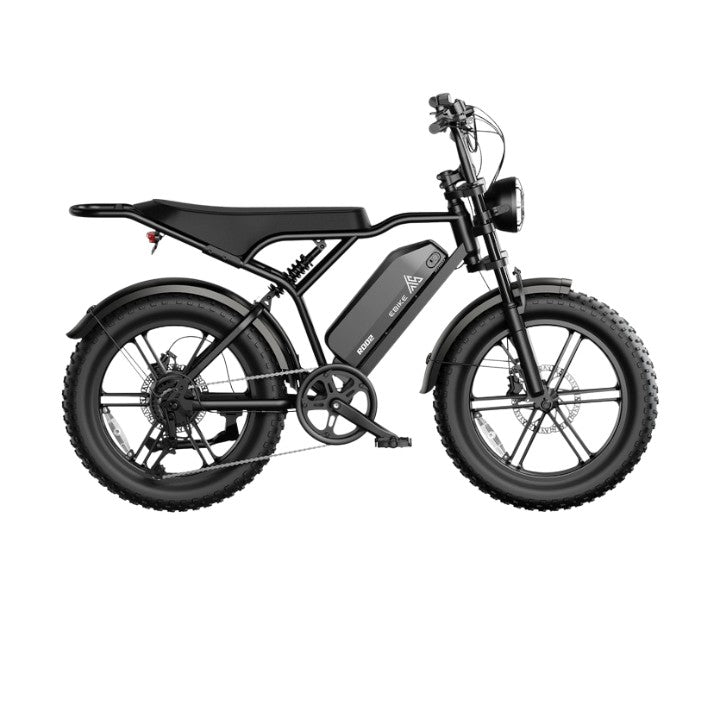
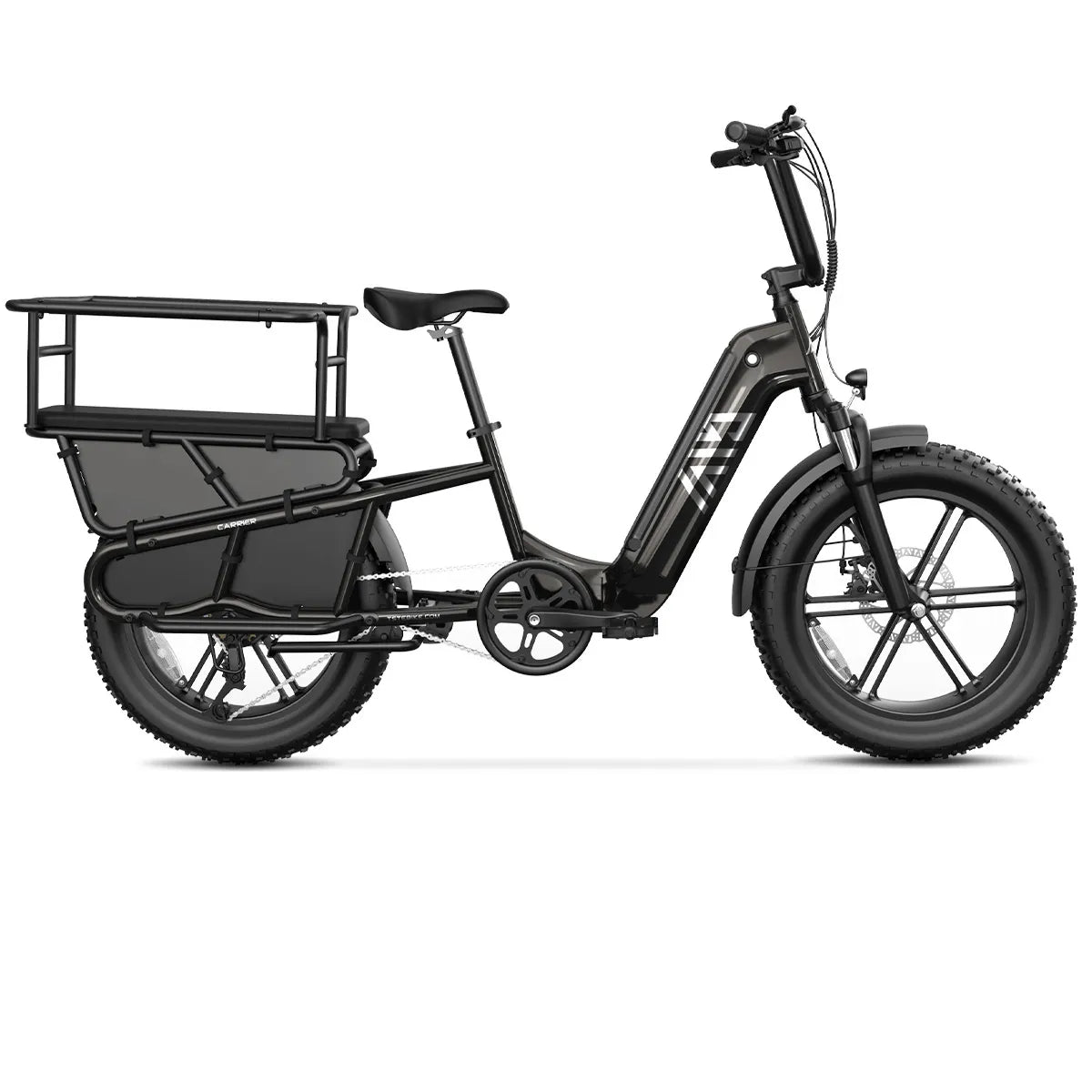
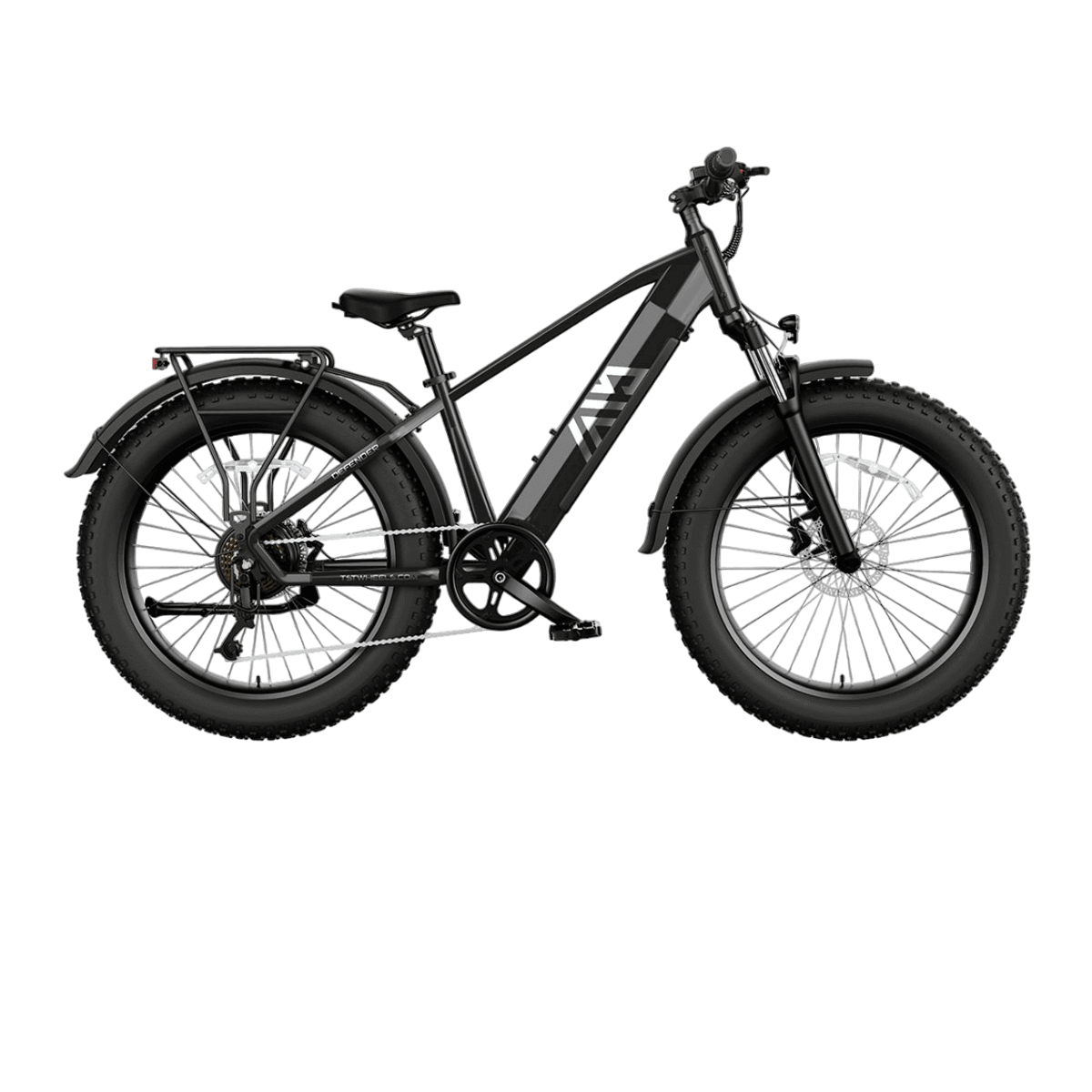

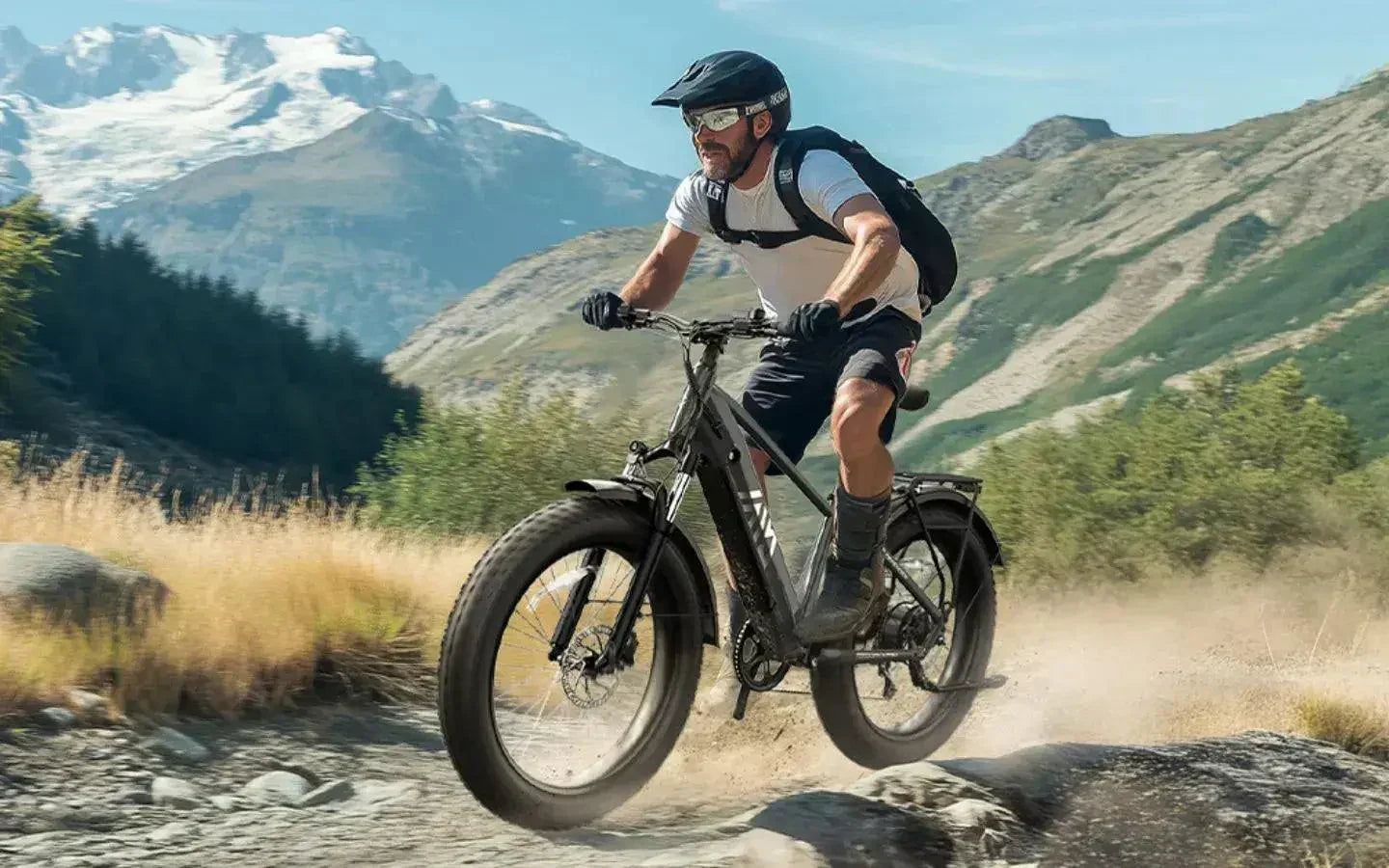
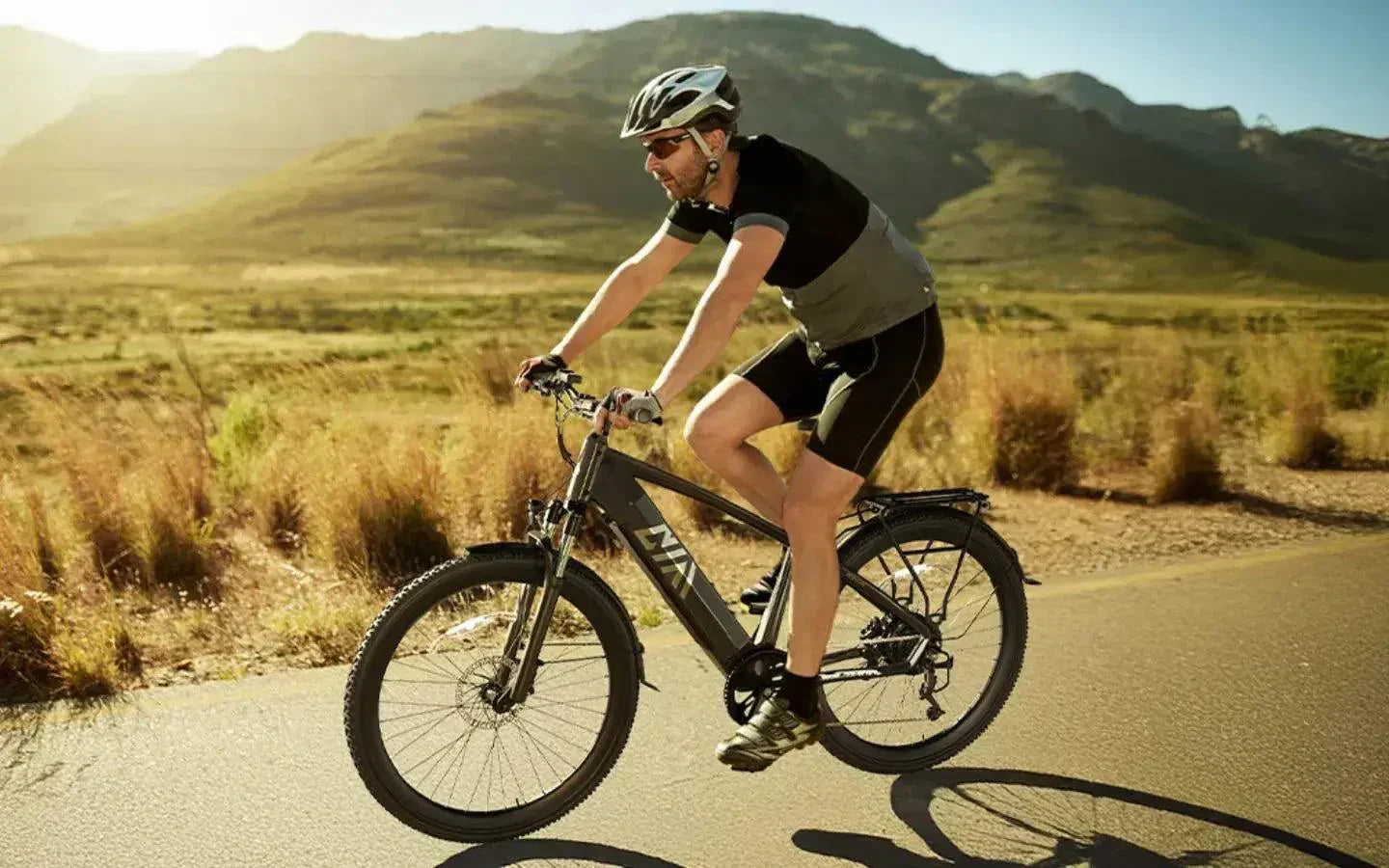
Leave a comment
All comments are moderated before being published.
This site is protected by hCaptcha and the hCaptcha Privacy Policy and Terms of Service apply.